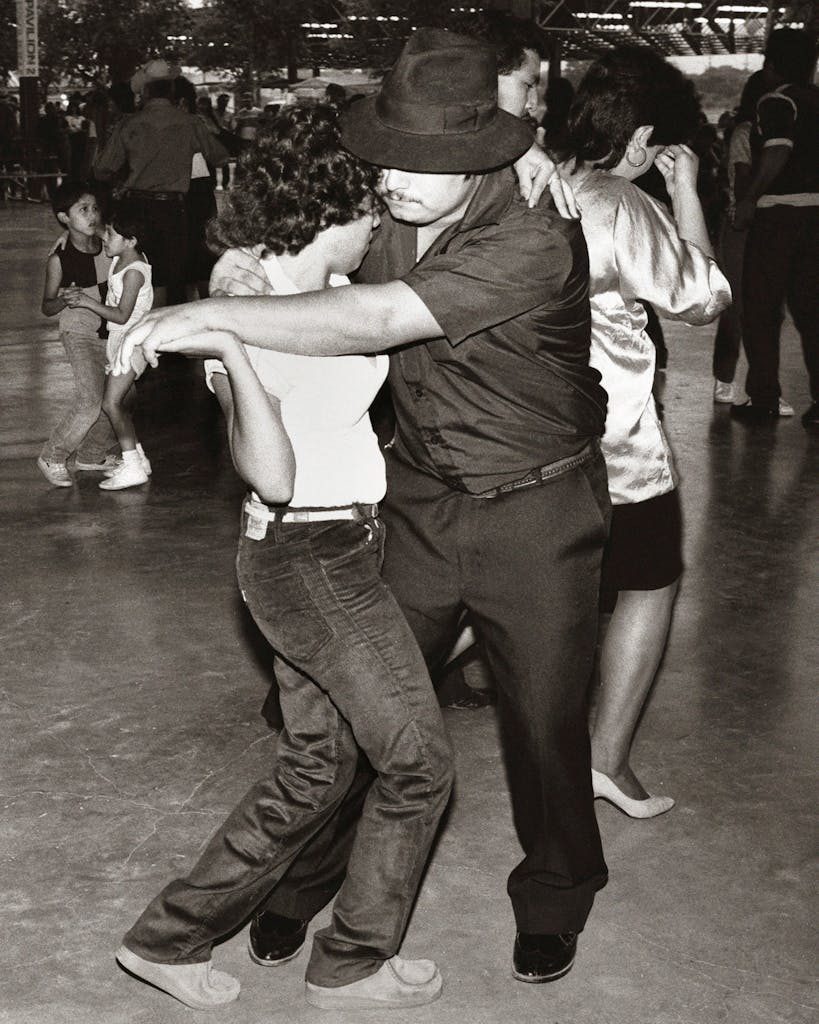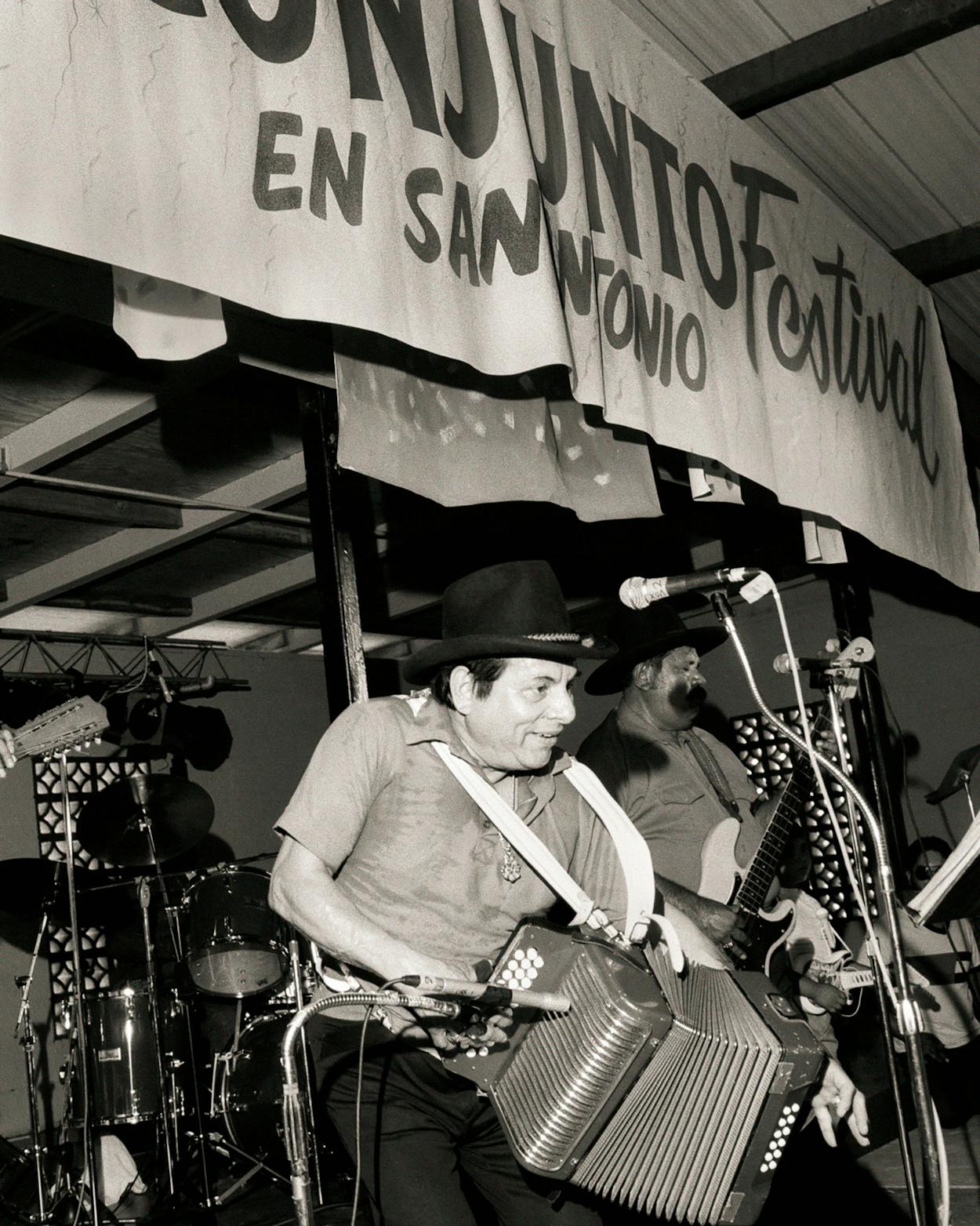When the stage explodes with the distinct sounds generated by the button accordion, the bajo sexto guitar, the bass guitar, and the drums, the crowd of more than 35,000 people–some dressed in their cowboy hats and boots–will begin dancing to the polka beat. More than 25 bands, including five-time Grammy award—winner Flaco Jimenez, accordionist Esteban Jordan, and Conjunto Music Hall of Famer Ruben Vela, will perform at the Tejano Conjunto Festival, which celebrates its twentieth anniversary this year.
Organized by San Antonio’s Guadalupe Cultural Arts Center, the five-day festival will kick off May 9 with an extravagant opening night mixer at the historic Guadalupe Theater. Special events will include a video documentary release titled “Tejano Conjunto Festival: 20 Years of Music”; a tribute to the legendary conjunto artist Valerio Longoria, who recently passed away; inductions into the Conjunto Music Hall of Fame; the presentation of the winners of the annual national poster contest; a photo exhibit showcasing twenty years of festival images taken by Al Rendon; and the anticipated release of the anthology, Puro Conjunto, An Album in Words and Pictures: Writings, Posters, and Photographs From the Tejano Conjunto Festival en San Antonio, 1982—1998.
The Evolution of the Tejano Conjunto Festival
Juan Tejeda, the festival’s founder, says the first festival back in 1981 was a “four-band concert” that was called a conjunto festival. What Tejeda envisioned was something different, an event that would breathe respect into the attitudes toward Tejano conjunto music. “We wanted to change the perception many people had of conjunto–that it was low-class cantina music,” Tejeda says. “It’s not low-class, just different. It’s still good music.”
Known as the original tejano music, conjunto was considered to be the music of the poor migrant worker, merely barrio or pueblo music of South Texas. The word “conjunto” is Spanish for “group” or “ensemble,” but it takes on a different meaning among Tejanos. It represents a hybrid sound that blends Mexican, German, Latin American, and U.S. influences. The button accordion is the essential instrument of conjunto music, but the modern traditional form has grown into the four-piece conjunto (the button accordion, the bajo sexto guitar, the bass guitar, and the drums). Tejeda, who was then the director of the Xicano Music Program at the Guadalupe Cultural Arts Center (GCAC), wanted to recognize those artists who were pioneers of the genre so he created the Tejano Conjunto Festival. He also wanted to educate people about Chicano music and culture and to preserve the distinct art of traditional Tex-Mex music.
Consequently, in 1982 the second festival reflected many changes introduced by Tejada. On the music front the GCAC created the Conjunto Music Hall of Fame to honor conjunto musicians. Since that first festival, 37 artists have been inducted into the Hall of Fame, among them Valerio Longoria, Tony de la Rosa, Lydia Mendoza, Flaco Jimenez, Esteban Jordan, and the father of conjunto Narciso Martinez. In addition, the GCAC became one of the first nonprofit arts organization in the nation to offer classes in the button accordion and the bajo sexto guitar. Through the years, more than one thousand students have enrolled in these classes, which are taught by the first-rate names in conjunto.
To nurture a deeper understanding of Chicano music and culture, the GCAC established an annual poster contest, which is open to anyone, including students in junior high, high school, and college. The winning entry becomes the official Tejano Conjunto Festival poster and receives national recognition; the winner takes home $2,000. “This really let us educate our own people. The contest got even the kids learning about conjunto,” Tejeda says.
The Guadalupe staff also created a program-magazine that appeared as a special issue of the Guadalupe Cultural Arts Center’s magazine, Tonantzin. Aside from functioning as a program to the festival, it also contained biographies on the performers and scholarly articles on conjunto music. The program-magazine developed into an authoritative publication on conjunto music and is now in high demand among conjunto fans and musicologists.
During the seventeen years he directed the festival, Tejeda implemented some changes that were well-received and others that brought him harsh criticism. “I started off strictly traditional, only showcasing groups that used the accordion and bajo sexto and such,” Tejeda says. “But in order to make every year different, I began to do themed nights, like ‘New Directions for Conjunto,’ where groups like Los Lobos played, or ‘Women in Conjunto Music,’ and I featured progressive artists like Roberto Pulido, who was using the saxophone in conjunto. You had to use the accordion in order to be included in the festival, but it was no longer limited to the traditional.”
Including the popular and progressive conjunto music may have won Tejeda criticism, but it gave those artists a voice they hadn’t had before. The festival played a significant role in the explosion of conjunto and tejano music during the late eighties and early nineties. The festival became what Tejeda had intended it to be–a celebration of a music, a people, a culture. “The festival really grew into an act of Chicano-cultural citizenship. It’s an affirmation of our identity as Chicanos, of our right to be different,” says Tejeda.
This year, Pilar Chapa, who is now the director of the Xicano Music Program at the GCAC and has been directing the festival for the past three years, is expecting an audience of 40,000. According to Chapa, people will be coming from California, Illinois, Ohio, New York, Mexico . . . all over.

The Birth of the Book
The idea for the Tonantzin anthology dates back to 1995, when the Tejano Conjunto Festival was celebrating its fifteenth anniversary. Tejeda wanted to compile 15 years’ worth of articles printed in the annual program-magazines as well as the fifteen official festival posters. He contacted Avelardo Valdez (who became the book’s other editor) and said, “Let’s do it.” Two years later, the Guadalupe Cultural Arts Center and the Center for Mexican American Studies (CMAS) at the University of Texas at Austin agreed to co-publish the book. Victor Guerra, the editor of CMAS Books (the publication arm of the Center for Mexican American Studies), says it is terrific for conjunto music because it will provide another perspective. “There existed only three books that dealt extensively with conjunto, and they were all written by the same guy. Now this one will join the other three,” he explains.
The book contains 33 pieces by 24 authors, 22 photographs and 17 posters by 14 artists; Tejeda is confident it will be a tremendous resource for people interested in conjunto music. “What’s great about the book is the diversity of the literature,” Tejeda says, referring to the short stories, interviews, personal essays, scholarly articles, and poems. “It’s some of the best stuff out there on conjunto music. I can’t wait to see it [the book]. It’s going to be so beautiful.”
Puro Conjunto: An Album in Words and Pictures will be available at the festival and through the University of Texas Press and the Guadalupe Cultural Arts Center gift shop.







